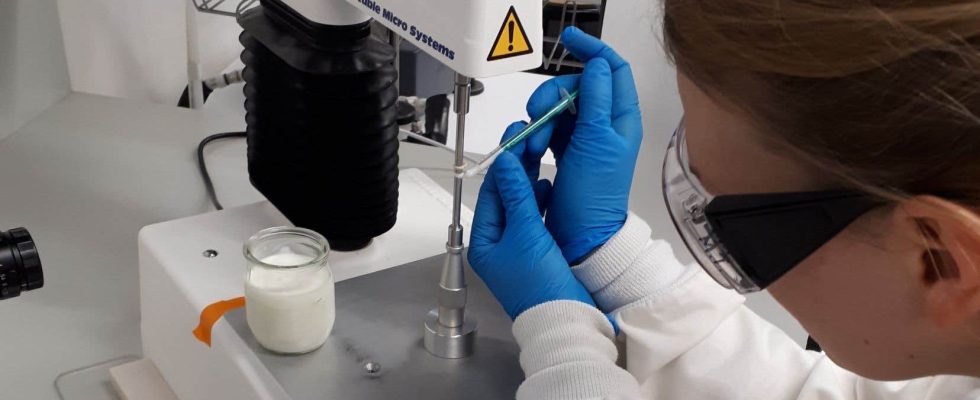This text is part of the special Research section
A research team from Laval University collaborated for four years with the companies Yoplait and General Mills with the aim of improving the composition of yogurt by reducing additives, while retaining the texture.
In North America, it is common to use agents that control the texture of yogurts, called additives, such as starch, gelatin or pectins. They allow you to act on the texture of foods. But today, consumers are becoming more and more informed and interested in the composition of the foods they consume. In this context, manufacturers are seeking to improve their products to meet demand.
Market leaders Yoplait France and General Mills in the United States approached Laval University to conduct a research project to improve their yogurt. “The Milk Science and Technology Research Center has existed for over 35 years. We are known internationally for our expertise,” says Sylvie Turgeon, researcher and full professor in the Department of Food Sciences at the Faculty of Agricultural and Food Sciences at Laval University.
She explains that thanks to work carried out around fifteen years ago, we know that there are bacteria that can be used in yogurt which will naturally produce a thickening agent. The idea is to avoid the addition of additives and replace them with the natural action of selected bacteria, thereby simplifying the formulation of yogurt.
A sophisticated scientific process
Although yogurt is a basic food product, working on its texture and composition requires the most advanced scientific research. The first step is to identify the strains of interest, explains Steve Labrie, researcher and full professor in the Department of Food Sciences, to lead this research project. “We screened more than 500 bacteria with our genomic tools which allow us to identify genes in the laboratory and selected the best microorganisms which could reproduce the texture instead of additives. » This is also the originality of the project, explains Sylvie Turgeon.
Once the candidates are selected, tests are carried out in the laboratory: the results are analyzed and textures such as viscosity, firmness or adhesiveness are measured. Tests are then carried out in real conditions with industrial partners, thanks to whom it is possible to verify whether the laboratory tests are conclusive.
“The work carried out by the partner at the pilot plant is more representative of reality than if we do it ourselves on a laboratory scale,” explains M.me Turgeon. There is a benefit for researchers and students from collaborating with industry partners: the former will be able to compare their research results to a concrete environment, while industrialists benefit from the expertise and laboratory research that they could not have done themselves, adds Mr. Labrie.
A collaboration that changes things
The partnership between Laval University, Yoplait France and General Mills demonstrates numerous advantages. The work was, for example, carried out by one of the university students, who spent six months with the partner, in the pilot plant, to follow the project, rejoices Sylvie Turgeon. “Thanks to the partnership, the potential for impact is greater, but the research is also more relevant, and the training of students is greatly enriched by the internships, but also by the discussions throughout the project. »
Steve Labrie is also enthusiastic when he talks about this win-win collaboration. “It is a success for the training of students, the research programming of our centers and for the partners. We are particularly proud of the result. »
Financing a project of this scale was also possible thanks to the partnership, explains Sylvie Turgeon. “The levels of funding that we managed to obtain were only possible thanks to the financial and in-kind investment of the partners. » The project also received financial support from Génome Québec-Genome Canada, the Natural Sciences and Engineering Research Council of Canada and MITACS, without which the research project could not have been carried out.
The application of the results is in the hands of manufacturers now. Although the project is finished, the team is traveling all over the world to present it: after Chicago and Europe in 2023, the project will be presented in France at a major dairy congress next fall.
This content was produced by the Special Publications team at Duty, relating to marketing. The writing of the Duty did not take part.
